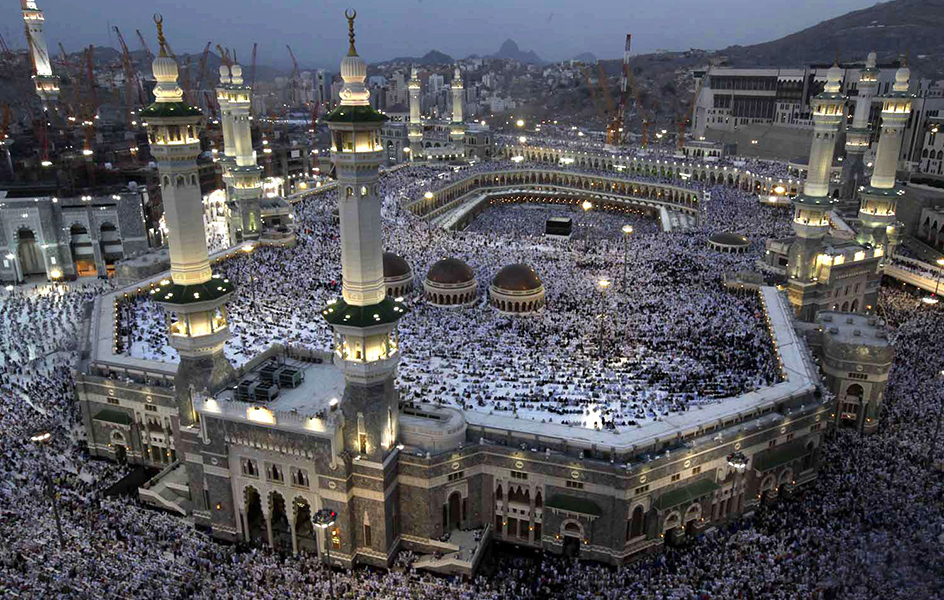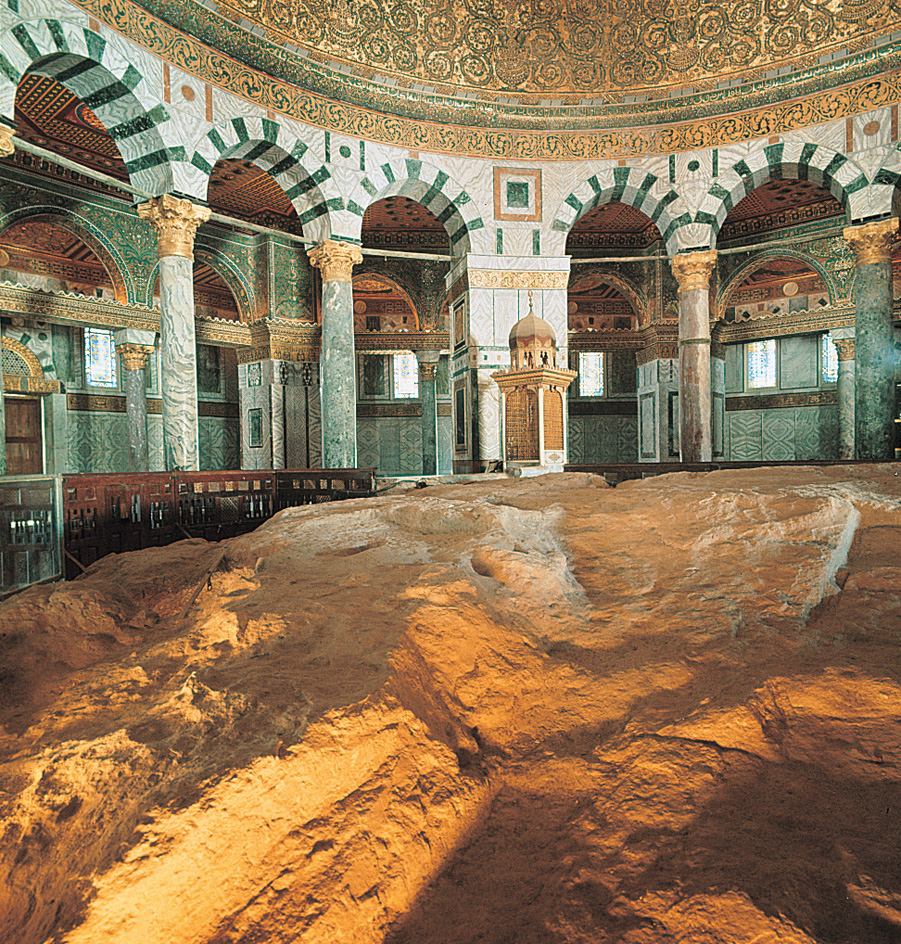Muhammad << moh HAHM uhd >> established the Islamic religion in Arabia in the early 600’s. The name Muhammad means praised one. There are several common spellings of the name, including Mohammad and Mohammed. Muslims (followers of Islam) believe Muhammad was the last prophet of God and that he completed the sacred teachings of earlier prophets, including Abraham , Moses , and Jesus . Muslims respect Muhammad, but they worship only God. According to tradition, Muhammad lived from 570 to 632.
Muhammad was one of the most influential men in history. During his lifetime, he brought profound changes to Arabia. When Muhammad began to preach in 612, Arabia was ruled by tribes (large families) who often fought one another for control of the region. Most of the people there, called Arabs , worshiped many gods and prayed to idols and spirits.
Muhammad taught that there is only one God and that people would better themselves and their societies if they practiced islām (submission) to God. Muhammad replaced the old loyalty to tribes with a new tie of equality and allegiance among all Muslims. He also preached against the injustice of the wealthy classes in Mecca , a city in western Arabia, and tried to help the poor.
Muhammad led his people to unite in a great religious movement. Within a hundred years after his death, Muslims took Muhammad’s teachings to other parts of the Middle East and to Asia, Europe, and northern Africa.
Early life.
Muhammad was born in Mecca. His father died before his birth, and his mother died when he was a child. His grandfather Abd al-Muttalib and, later, his uncle Abū Tālib became his guardians. As a young man, Muhammad joined his uncle on caravan journeys through Arabia to Syria. In Mecca, he probably attended assemblies and fairs where he may have heard people of different faiths express their ideas.

At the age of 25, Muhammad began working for Khadījah, a wealthy widow of about 40. He later married her. They had two sons and four daughters. The sons died young. One daughter, Fātima , married Alī ibn Abī Tālib , the son of Abū Tālib. Many Muslims trace their descent from Muhammad through this couple.
His religious life.
Muhammad was not satisfied with the religion of his people, and he often went into the mountains to meditate. According to Islamic tradition, one day when Muhammad was alone in a cave on Mount Hira, a vision appeared to him. He was 40 years old at the time. Muslims believe the vision was of the angel Gabriel, who called Muhammad to serve as a prophet and proclaim God’s message to his people. At first Muhammad did not understand his vision. But his wife Khadījah reassured him of his calling. She became the first convert to Islam.
For a time, Muhammad received no further revelations, and he grew discouraged. Then Gabriel returned and told him, “Arise and warn, magnify thy Lord … wait patiently for him.” Muhammad told only relatives and friends about the revelations. But he soon began to preach publicly about God. Muslims believe that the revelations Muhammad received were the words of God. Muhammad’s followers collected the revelations in the book now called the Qur’ān . Based on these revelations, Muhammad preached about how God witnessed people’s actions. He said that God would resurrect them on the Day of Judgment to be judged on having done good or evil. Many people who heard Muhammad ridiculed him, but others believed him. Abū Bakr, a rich merchant, became an early follower of Muhammad. Umar ibn al-Khattāb , a Meccan leader, first persecuted Muhammad but later accepted him as a prophet.
The Hijra.
Muhammad continued to preach in Mecca for some time. In 619, Khadījah and Abū Tālib both died, which caused Muhammad great sadness. Around this time, the people of Mecca also began to persecute the Muslims for their beliefs. In 622, Muhammad fled north to the nearby city of Medina , then called Yathrib. His emigration to Medina is known as the Hijra , also spelled Hegira. It is considered so important that the Muslim calendar begins with the year 622. The people of Medina welcomed Muhammad. His preaching and statesmanship soon won most of them as followers.
His teachings.
In Medina, the Muslims could practice their religion openly. The revelations received by Muhammad at this time established the moral and legal guidelines for the community. For example, they abolished the killing of unwanted baby girls, limited polygamy (marriage to multiple wives at one time), and regulated divorce and inheritance laws. The Qur’ān also placed limits on slavery and warfare and encouraged Muslims to help the poor.
The Meccans went to war against Muhammad and his followers. They attacked the Muslims in Medina several times but always were driven back. Muhammad seems to have expected Arab Jews and Christians to accept him as a prophet because Islamic teachings were similar to Jewish and Christian ones. Many did join the Muslims, but others from Jewish tribes helped the Meccans against the Muslims. Muhammad drove these tribes from Medina and fought them. After more Arabs joined Muhammad, he was able to march on his enemies in his home city of Mecca.

In 630, Muhammad entered Mecca in triumph. He offered pardon to the people there, most of whom accepted him as the Prophet of God. He destroyed the pagan idols in the cube-shaped shrine called the Ka`ba , prayed there, and made it a mosque (Islamic place of worship). Muhammad died two years later, on June 8, 632, in Medina. His tomb is in the Prophet’s Mosque in Medina.
